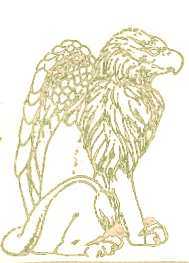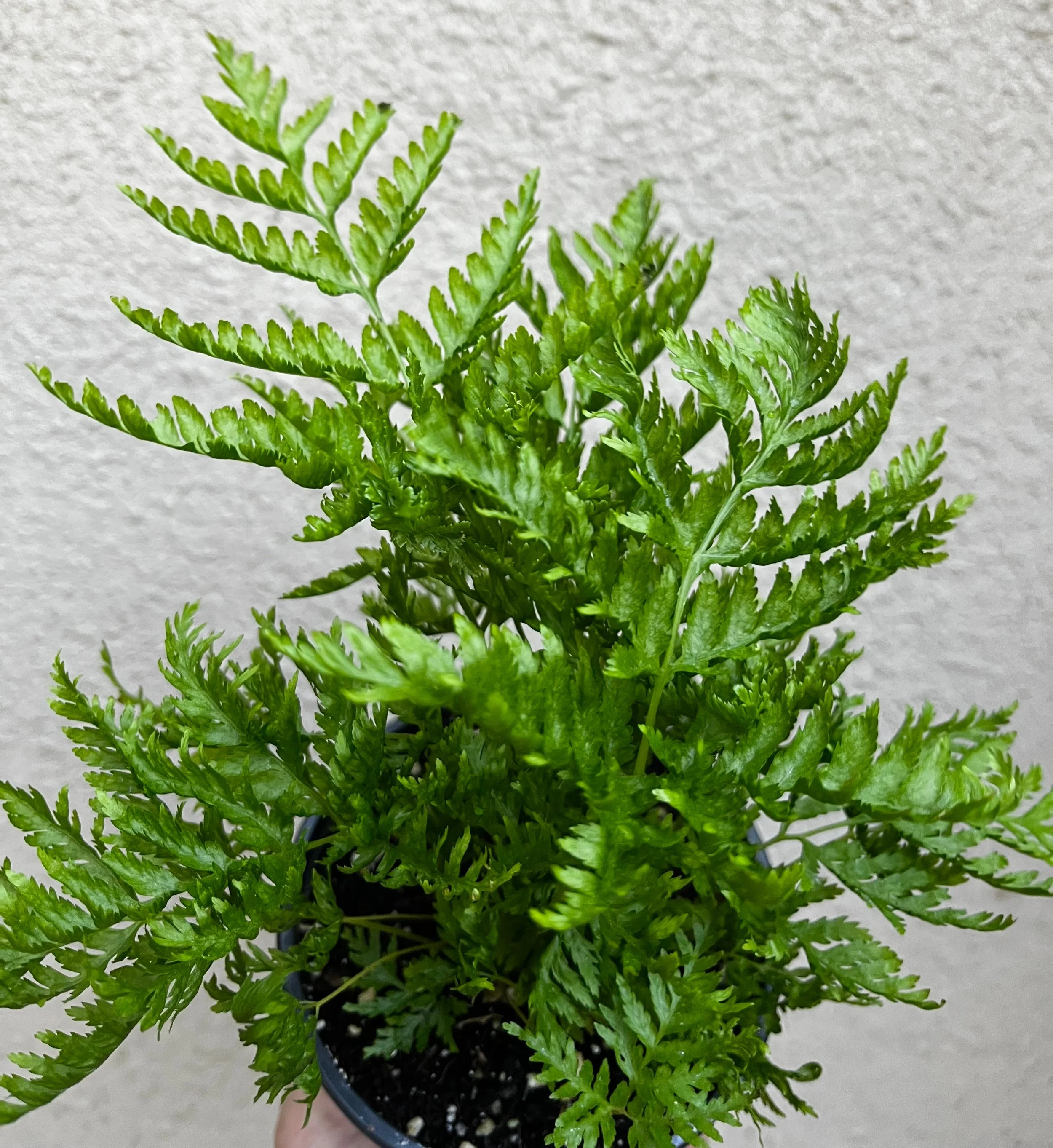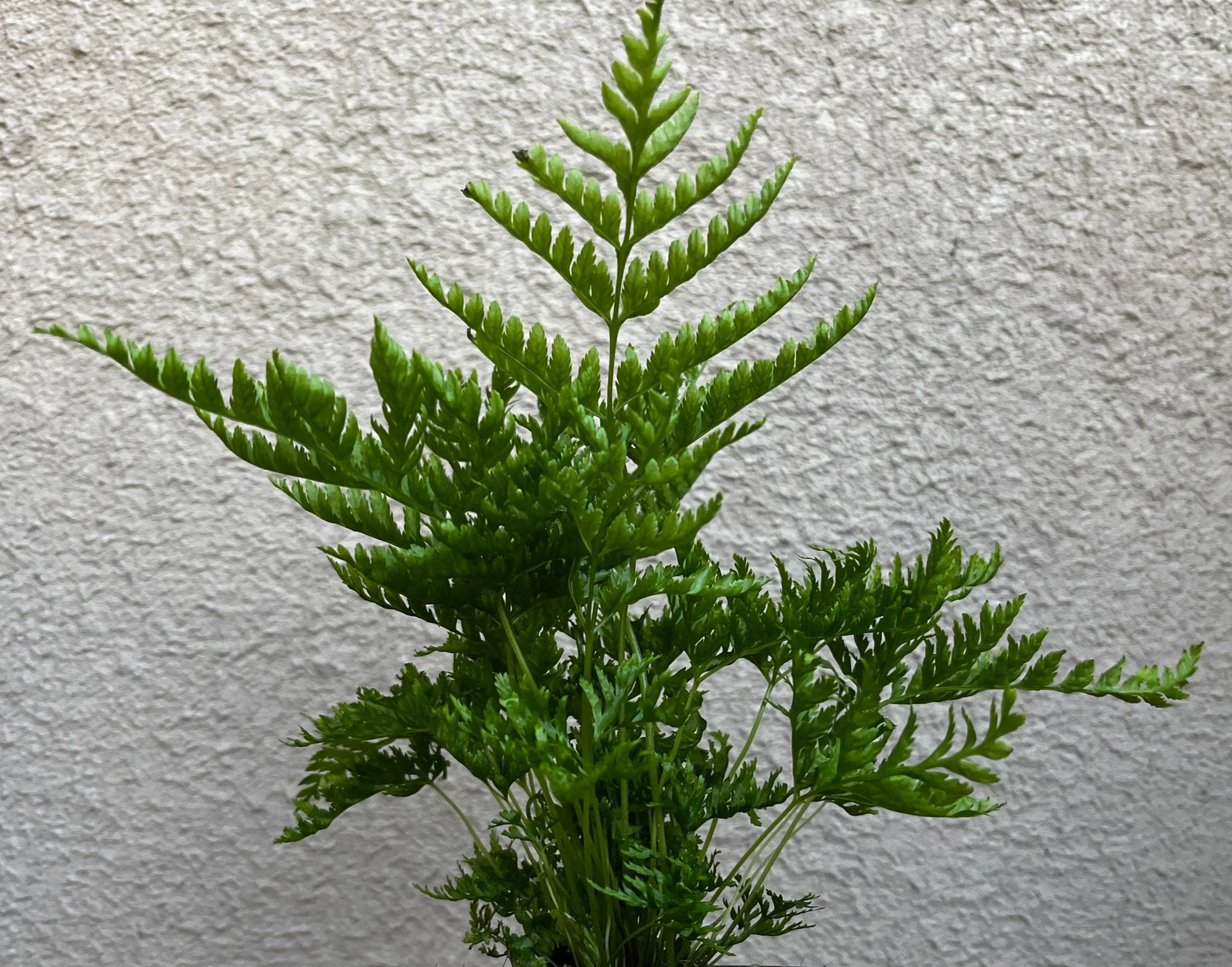Search for ferns by common name, latin name, USDA Zone, or by keywords like whether the fern is Evergreen, Sub-Evergreen, Semi-Evergreen, Deciduous, or Wintergreen or just browse our current fern selections.
Toothed Brake Fern or Silver Lace Fern (Pteris dentata [syn. Pteris straminea])
Toothed Brake Fern or Silver Lace Fern (Pteris dentata [syn. Pteris straminea])
This Pteris has become so widespread that it has been sold under many different species and cultivar names and has various synonyms. Several very similar Pteris species and subspecies in this group are separated only by minute details of the apical lobes, including Pteris flabellata (syn), P. catoptera, P. friesii, P. tremula, making some of these Brake Ferns devilishly tricky to sort out!
It has fairly lacy (two-pinnate-pinnatafid, somtimes nearly three-pinnate or more), upright fronds that tend to turn up at the margins, giving it an almost curly look to the foliage. As the name dentata implies, the pinnules have toothed margins with slightly irregular serration, which only contribute to its lacy, wavy looking fronds. Some growers note that it often has a slightly golden or straw colored stipe (stem) and that the golden color may extend up the rachis (stalk) and into the midribs and veins of the pinnae, giving some mature specimens an almost variegated look, although our stock has yet to demonstrate this color variation. Since it has become so widespread throughout the Eurasia and the Sub-Tropics estimates on its mature size and hardiness vary wildly, most likely owing to variations in conditions and the genetics of local populations, including various possible subspecies and the location of specimen and spore collection. Some growers in the UK report that it can overwinter outdoors in sub-freezing temperatures, but to be on the safe side we recommend treating it like so many other Pteris species that ultimately prefer protection from frost.
Synonymous with/Also sold as: Pteris straminea, Pteris flabellata
Frond Condition: Evergreen; may be Semi-Evergreen or even Deciduous in marginal conditions
Mature Size: 1 1/2’ to 3’, depending on conditions
Root Type: Clumping
Origin: Eastern Africa, Madagascar Turkey and Middle East (there is some disagreement on the distribution, with some sources claiming it is from Southeast Asia where it most likely escaped from cultivation and started to naturalize in the South Pacific where it has been found as far as the North Island of New Zealand!)
Cultural Requirements: Bright Indirect or Filtered Light, Part Shade to Shade, Evenly Moist to Lightly Moist, prefers High Humidity
USDA Zones: 8 (marginal), 9 (marginal), 10, 11, or as a Houseplant. Protect from Frost







